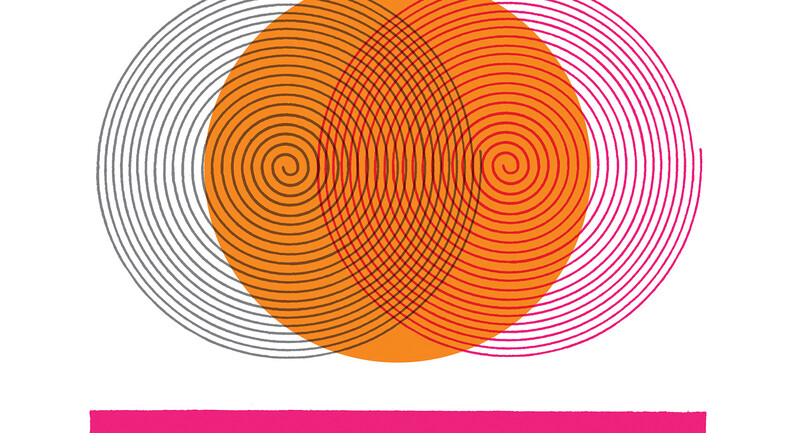In the field of economics, asymmetric information occurs during transactions in which one party has greater relevant knowledge than the other party. Almost all economic transactions involve asymmetries of information, but some are more skewed than others. For example, when someone purchases a used car, the seller—because he or she has owned the car for some amount of time—typically has more information about that car than the buyer. The buyer, who might like the way the car handles on a five-mile test drive, isn't aware that it begins to rattle after being driven for 10 miles. Thus, what is clear to one person (the seller) is not as apparent to another (the buyer). To help mitigate the negative impacts of these asymmetries, buyers can have a mechanic look the car over before purchasing it or go through a dealer who can offer a limited warranty. Although these mediating steps won't completely balance a potential disparity of information, they do serve to reduce deception and more accurately reflect and communicate the value of a product or service.
Unfortunately, the teaching and learning process can also fall prey to the trap of asymmetrical information. Even in a performance-based classroom—where the students and teacher share responsibility for designing, directing, and evaluating work—each party may possess information the other does not. These asymmetries result less from deception and more from gaps in communication. Thankfully, there are concrete steps teachers and students can take to share information in a more transparent, mutually beneficial manner.
Grading with Transparency
A performance-based classroom prioritizes the meaningful application of content—work that more closely mirrors the wider world outside of the classroom. Teaching using performance tasks and projects holds the potential to engage, excite, and challenge students (McTighe, Doubet, & Carbaugh, 2020). Such open-ended tasks and projects can, however, trend toward increased subjectivity in grading, especially when compared to more traditional, selected-response assessments. This subjectivity, in turn, raises the likelihood that asymmetries of information will impact how a grade is both assigned and received. Specifically, a lack of robust communication about what constitutes "success" could leave students unsure of where and how to invest their effort—and confused about what is expected of them.
Clearly articulating the objectives for a task or project is the first step in mitigating these asymmetries. When students know the goals of an assignment as well as what successful completion looks like, they are more likely to "hit the mark" with their performance. However, goal-clarity alone isn't enough if it fails to account for student differences. Learners come to us with varied backgrounds, motivations, experiences, readiness levels, and so on. In addition to clarifying objectives and criteria for success, teachers should honor the diverse needs of students by encouraging, measuring, and communicating information about student growth. Teachers should also honor habits of mind or "soft skills," such as perseverance and the capacity to receive and respond to feedback (Costa & Kallick, 2008); these skills have value within and outside of the classroom.
In other words, to truly reduce asymmetries of information when grading performance tasks and projects, teachers should seek to honor each student's unique learning trajectory by communicating individually relevant information to support their growth and build self-efficacy. Below we present five suggestions to reduce asymmetries of information, and increase communication, when grading performance tasks and projects. These ideas can be adopted at a comfortable pace, either simultaneously or in stages, and used in both face-to-face and online learning environments.
1. Grade the Three P's
A first suggestion when grading performance tasks and projects is to collect and report information on the "Three Ps" of assessment: performance, progress, and process.
Performance against teacher identified learning goals (which can be derived from standards).
Progress, or growth, as students complete a task or project.
Process, or the habits of mind that help students achieve success (active engagement in group work, responding to feedback, asking for assistance when needed) (Guskey, 1996; Tomlinson & Moon, 2013).
Students all have individual learning trajectories and timelines, and as such, grading should encourage students to pursue personal levels of excellence while also helping them understand the various habits of mind and practices that can lead to success and further growth. This multidimensional approach to grading, then, acknowledges that there is more to successful completion of performance tasks and projects than simply mastering content.
To illustrate how one might report performance, progress, and process, Figure 1 depicts a 5th grade social studies and language arts performance task. This project was created in Wiggins and McTighe's (2005) GRASPS format, a practical tool for designing authentic performance tasks which outlines the task's goal, role, audience, situation, and performance/product along with its success criteria (i.e., rubric).
Figure 1. Interdisciplinary Performance Task: Exploring Perspectives of Westward Expansion
Goal: Analyze the motivations and impacts of all participants in a given historical event.
Role: _________ (Choose one of the participants in the conflict over U.S. westward expansion: explorer; Native American; white settler, miner, or entrepreneur; African American settler, miner, entrepreneur, or enslaved person; Chinese laborer; railroad company executive; U.S. government official; the western biome.)
Audience: Modern-day residents of the United States.
Situation: Much of what U.S. residents know about the history of westward expansion was gleaned from popular fiction such as novels and movies. Many people today are unaware of the hardships faced by stakeholders as more and more people moved westward. You are to pick one of those stakeholders and share their untold, true stories so that U.S. residents understand the facts of westward expansion—not just the fiction.
Product: You will create a first-person account of your role and experiences moving westward. You will tell your story through a series of videos (using iMovie Trailer) or podcast episodes (using Anchor.com). Be sure to explain both the causes of your involvement as well as the positive and negative effects on you and on those around you. You will start by writing a script before you move to recording. Your finished product will be showcased on our class website.
This performance task was assessed, according to the three Ps, as follows:
Performance: Students were individually graded on the accuracy and thoroughness of the cause-and-effect information conveyed in their product. They were also graded on the quality of their evidence (research) and consistent use of the first-person narrative form.
Progress: Students were given a pre- and post-assessment on their knowledge of westward expansion and their readiness to assume and maintain first-person point of view in writing (from a perspective other than their own). The pre-assessment results helped the teacher devise necessary small-group instruction as students worked on their scripts, and the post-assessment results signaled whether or not students were ready to record their videos or podcast episodes. The teacher included a "progress note" on the final product rubric that included areas of documented growth for each student based on pre-assessment information.
Process: Students met with the teacher individually and in small groups to discuss their roles and experiences while crafting their scripts. The teacher used both an "information gathering" and a "first-person reporting" rubric to evaluate students' work in these areas. These ratings were given to students along with specific feedback to help them be more effective as they crafted the content-focused portions of their products. The students also used product-evaluation checklists to provide feedback to their peers who were creating similar products.
Approaching performance-based assessment in this way communicates an equitable approach to grading—one that places an emphasis on more than just the final product, while honoring and supporting the individual needs and contributions of each student.
2. Schedule Frequent Formative Check-Ins-Provide Feedback, Not Grades
Teachers often use grades as a motivational tool. The logic behind this practice is that if an assignment is graded, students are more likely to invest effortmpleting it. Although this strategy works for some students, for many others it does not—exacerbating existing asymmetries within the classroom. Assessment and grading, however, are not synonymous. Although grading falls under the larger umbrella of assessment, grading is typically used to document some "end point" of learning (although, in reality, even graded work can be used to promote reflection and growth—see suggestion #3).
e assessment, specifically, reduces asymmetries of information by keeping students in tune with their progress toward specified learning objectives and by providing opportunities for corrective action before grading even enters into the equation. In performance-oriented classrooms, a variety of assessment techniques can be used to "check-in" on student progress. Coupled with quality feedback, these are also opportunities to encourage student growth over the course of a task or project. Ongoing checks for understanding, feedback on portions of the overall task or project, and individual or small-group conferences are all strategies that can provide useful information to guide learning. Self- and peer-assessment, properly structured and implemented, can also help students target individual areas of strength and those in need of improvement. Free online tools such as Flipgrid, GoFormative, and Padlet can facilitate such feedback loops in an online environment. Revisiting the westward expansion performance task example presented in Figure 1, we could see a teacher using pre-assessment data to assemble and provide feedback to small groups of students with similar learning needs. Any such learning check affords teachers opportunities to build in necessary scaffolding or challenges. For example, a teacher could create an intermediate assignment that asks students to record themselves reading a draft of their script using Flipgrid (a social-learning platform where students can record themselves, and where teachers and students can respond to those recordings).
After listening to students read their work, the teacher could post brief comments on areas of strength and growth regarding their communication of important information via the first-person format. Assuming students have clarity regarding the criteria on which they'll be graded, the teacher might have students self-assess by listening to their own recordings and then filling out an exit ticket with "two glows and one grow." Students might also partner up with a peer who selected the same product and provide feedback on their recordings.
3. Allow Students to Revise and Submit
Typically, when a grade is assigned to a project or performance task, it serves as a signal that the learning has "ended." This is an inauthentic representation of the learning progression, which—in real life—exists on a continuum. The process of learning to cook, play a sport, use complex software, draw, or play a musical instrument never really stops; rather, the "student" can continue to increase his skill over time, using mistakes as stepping stones to expertise. In the same way, allowing students to analyze their mistakes, revise, and resubmit tasks and projects—or portions of them—can lead not only to improved student performance, but also to greater student persistence.
Encouraging revision also honors the reality that our best ideas are not necessarily our first ideas and capitalizes on the rich notions that surface during "second- and third-wave thinking" (Gallagher, 2011, p. 229). Further, a teacher who encourages revisions will inevitably engage in conversations with students about what success looks like. These conversations ensure both teachers and students have access to the same information about learning goals; this, in turn, takes the guesswork out of what it means to be successful. Of course, the success of any policy on revisions and resubmissions relies heavily on the quality of the evaluation tool. A successful rubric will clearly communicate what expertise looks like in terms of content, process, impact, and quality (McTighe et al., 2020). Students should be able to use feedback communicated via a descriptive rubric to know exactly where to focus their time and energy as they make revisions.
4. Use Anchors to Provide Clarity
Descriptive rubrics gain even more communicative power when paired with "anchors" or "exemplars" that illustrate rubric criteria in action. Giving students a description of what expertise looks like is important, but even more impactful is giving them models of expertise that bring the rubric criteria to life. One compelling exercise is to share several anchor projects that represent varying levels of expertise and ask students to use the rubric to determine what "score" each anchor originally received. The conversation stemming from such analysis allows students to engage more deeply with success criteria and provides teachers with opportunities to clarify misconceptions.
To further enhance communication, teachers can select real-world models to serve as anchors. For example, students working on the project described in Figure 1 could devote time to analyzing and evaluating professional videos or podcasts. Discussions of each product's strengths and weaknesses clarify what successful work looks like while infusing the project with authenticity and relevance.
5. Encourage Student Goal Setting and Progress Monitoring
Work in a performance-based classroom is punctuated by "check-ins" with the full group, with small groups, and with individuals. These check-ins include, but are not limited to, formative checks for understanding (discussed in suggestion #2). They should also incorporate systems for (1) helping individuals and small groups stay on track, and (2) helping students set personal goals and chart progress toward those goals.
In the business world, project teams often use "scrum boards" to keep track of the subtasks that teams have finished, are working on, and have yet to do. Teachers in project-based classrooms can employ a similar system by posting subtasks on sticky notes and asking individual students or teams to move those tasks to the appropriate column ("to do," "in progress," "done"). Alternately, they could use a digital scrum board; a free program for doing so is available from Trello. Charting progress in this manner gives both the teacher and students access to the same information about project completion and can help the teacher determine where to lend additional support or challenge (McTighe et al., 2020). Whether building their client base or improving their public speaking skills, working professionals set individual goals for themselves and track their growth. They often share their goals with a team leader or a boss with the understanding that this person will help them meet their goals and hold them accountable. The same principle holds true in classrooms; students should be given the opportunity to consider the overarching goals for the term (such as transfer goals, or long-term outcomes that specify what students should be able to do when they confront new or unique challenges, issues, or situations [McTighe et al., 2020]) and determine specific areas in which they want to improve. Periodically, students should be given time to reflect on those goals and note specific work samples or other indicators that reveal growth. The teacher can partner with students to share information about progress, process, and product and to develop action steps for future growth. Even if this process occurs only once a semester, it is one of the most valuable actions a teacher-student team can take to decrease the asymmetries of information regarding both student progress and students' perceptions of that progress. It fashions a partnership that fosters key habits of mind such as persistence, metacognition, and flexible thinking (Costa & Kallick, 2008).
Clarity Through Symmetry
The use of performance tasks and projects holds immense potential to engage students in meaningful and authentic work. However, these tools also come with their own set of challenges. Primary among these is how to grade tasks and projects to reduce asymmetries of information, while at the same time supporting and guiding all learners along their individual continuums of growth. By implementing the suggestions mentioned, students will gain clarity in expectations, develop a stronger sense of self-efficacy, cultivate a willingness to tackle complex and meaningful work, and forge a path toward becoming lifelong learners.









